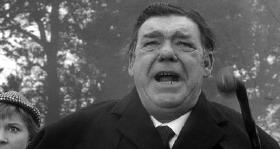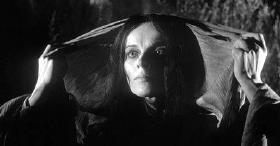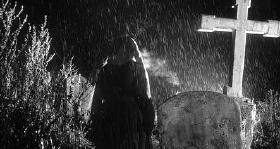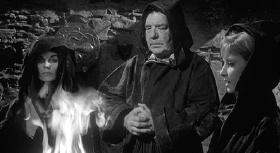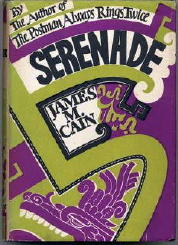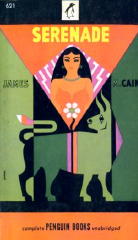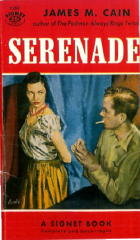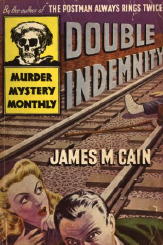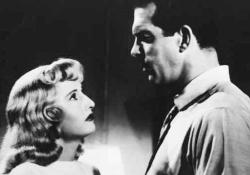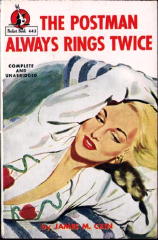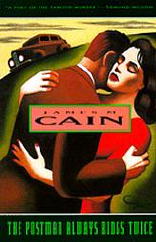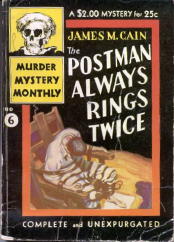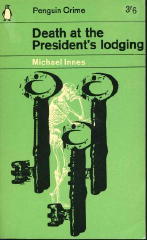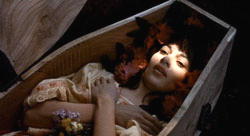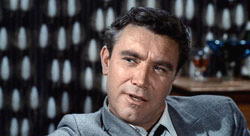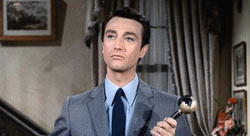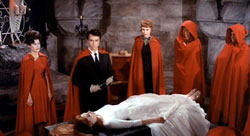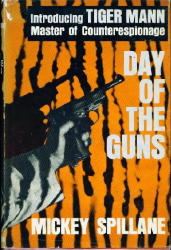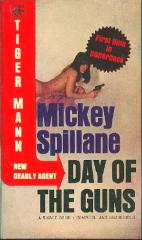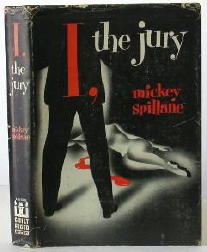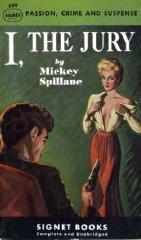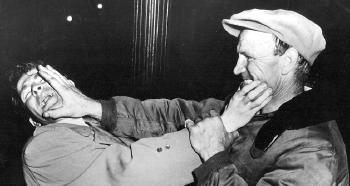A 1001 MIDNIGHTS Review by Bill Pronzini:
JAMES M. CAIN – Cloud Nine. Mysterious Press, hardcover, 1984; paperback, 1987. Robert Hale, UK, hardcover, 1985. J. M. Dent & Sons, Canada, trade ppbk, 1987 (shown).
In the 1930s and 1940s, James M. Cain was the most talked-about writer in America. His novels of that period, like the detective novels of Dashiell Hammett, a few years earlier, broke new ground in crime fiction.
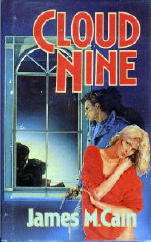
Until the publication of The Postman Always Rings Twice in 1934, sex was a topic handled with kid gloves and almost always peripheral to the central story line; Cain made sex the primary motivating force of his fiction, and presented it to his readers frankly, at times steamily. (Some of the scenes in Postman are downright erotic even by today’s standards.)
But Cain, of course, was much more than a purveyor of eroticism. His lean, hard-edged prose caused critics to label him a “hard-boiled” writer, but he is much more than that, too. His best works are masterful studies of average people caught up and often destroyed by passion (adultery, incest, hatred, greed, lust). They are also sharp, clear portraits of the times and places in which they were written, especially California in the depression era Thirties.
Cain’s success began to wane in the Fifties and Sixties, however, partly because of a desire to write novels of a different sort from those that had brought him fame, and partly because of a clear erosion of his talents (a seminal fear of all writers) brought about by advancing age.
Cloud Nine is one of those “different” novels, written in the late 1960s when Cain was seventy-five. It was rejected by his publisher at that time and shelved. Resurrected for publication in 1984, seven years after Cain’s death, it was puffed by its publisher as “an important addition in contemporary American literature” and by an advance reviewer as “a minor masterpeice and publishing event of some note.”
It is none of those things. It is, simply and sadly, a flawed novel of mediocre quality – a pale shadow of his early triumphs.
The novel’s basic premise is solid. A teenage girl, Sonya Lang, comes to Maryland real-estate agent Graham Kirby with the news that his nasty half brother, Burwell, has raped her and that she is pregnant as a result. Through a complicated set of circumstances, Graham agrees to marry Sonya, initially for charitable reasons; but he soon falls in love with her.
He then discovers that Burwell may be a murderer as well as a rapist, and that another murder may be part of Burwell’s future plans. The conflict between Burwell and Graham forms the central tension here, with Sonya as one catalyst and a million dollars in prime real estate as another.
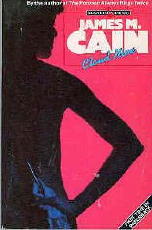
All the elements are present for a classic Cain novel, ones that should combine to keep the reader on tenterhooks, “anxious to find out what happens,” as Cain biographer Roy Hoopes says in an Afterword, “but always dreading the ending because of the horror [he senses] would be waiting – ‘the wish that comes true’ that Cain said most of his novels were about.”
But the elements simply don’t mesh. The bulk of the novel is taken up with the relationship (much of it sexual) between Graham and Sonya, to the exclusion of everything else; Burwell doesn’t even appear on stage until page 108, and other major plot points are introduced sketchily and/or not developed until the final fifty to sixty pages.
Graham is a rather dull and unappealing narrator, not at all one of “those wonderful, seedy, lousy no-goods that you have always understood,” as one of Cain’s friends described the protagonists of Postman and Double Indemnity.
And the prose is anything but lean and hard-edged. It reads as if Cain, late in life, discovered and became enamoured of commas and clauses, as witness the novel’s opening sentence: “I first met her, this girl that I married a few days later, and that the papers have crucified under the pretense of glorification, on a Friday morning in June, on the parking lot by the Patuxent Building, that my office is in.”
Not everything about Cloud Nine is weak; there are some crisp passages of dialogue reminiscent of vintage Cain, the character of Sonya is well developed, and there is power in the climactic scenes (although none of the existential terror and tragedy of the early books). But on balance, and like the other suspense novels Cain wrote late in life – The Magician’s Wife (1965), Rainbow’s End (1975), The Institute (1976) – it is minor and disappointing.
———
Reprinted with permission from 1001 Midnights, edited by Bill Pronzini & Marcia Muller and published by The Battered Silicon Dispatch Box, 2007. Copyright © 1986, 2007 by the Pronzini-Muller Family Trust



